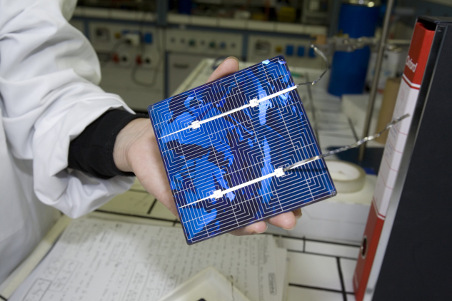
Industrial development and population growth have led to a surge in global energy demand. At the same time, ongoing climate and geopolitical crises are demanding a rapid transition to a greener, zero-emissions economy.
Among the technologies that can address the global energy problem is photovoltaics one of the five research topics addressed by the FLEXILAB Project, "Departments of Excellence Project 2018-2022”.
We interview Prof. Maurizio Acciarri, professor of Experimental Physics of Matter in the Department of Materials Science and work package leader of this research activity, to understand why to choose photovoltaics and what were the results achieved during the project.
Why choose photovoltaics?
Solar energy is the most abundant, inexhaustible and cleanest of all renewable energy resources to date. The sun's energy can be considered the main source of all kinds of energy. It can be used by various techniques; making full use of sunlight to generate electricity directly as in photovoltaic technology or using the sun's heat as thermal energy.
For this reason, the contribution of photovoltaics to power generation is expected to become increasingly important.
What is FLEXILAB's focus on photovoltaics and the approach taken?
Our goal is to develop photovoltaic cells that achieve 30 percent efficiency by taking advantage of all the possible options that photovoltaic technology offers. This is the target we can set ourselves considering the technology called "single-junction." It can be exceeded by appropriately coupling several single cells resulting in a multi-junction cell. In addition to wanting to increase the efficiency of solar cells, we also have the need to decrease the environmental impact by reducing the amount of material used and look for new materials that are abundant in nature.
Therefore, for this purpose we developed new materials in the form of inorganic and hybrid thin films (such as kesterites and perovskites) to make tandem cells.
In parallel, a series of ferrocene-based derivatives were synthesized and studied as redox mediators in environmentally sustainable DSSC solar cells.
New quantum-confined nanostructures have also been developed for applications in photon-management devices such as luminescent solar concentrators for architecturally integrated photovoltaics and up-conversion assemblies capable of exploiting portions of the solar spectrum that are not accessible with conventional systems. These nanomaterials are based on various types of semiconductors such as binary and ternary chalcogenides and perovskites.
Research was also conducted in the project to make better use of thermal energy recovery using thermoelectric devices.
Performance and low environmental impact: how to find the right balance?
Although our main goal was to increase the performance of the devices, we also did not want to neglect the aspect of environmental protection in the fabrication of the devices: synthesis and surface chemistry processes of solution-processable colloidal nanostructures and organic materials with low environmental impact of the processes and toxicity of the products are adopted. The ultimate goal is that photovoltaic technology can become the main source of clean, abundant and cheap energy.
What were the results achieved?
The results obtained are multiple given the multiple approaches.
We have developed the deposition of inorganic thin-film photovoltaic cells with low-impact materials and methodology capable of achieving conversion efficiencies of 2 percent. Optimization is still in progress but the results show the possibility of replacing some rare and toxic materials.
Some variants of Deep Eutectic Solvent for DSSC photovoltaic cells, with hydrophobic or hydrophilic characteristics based on eco-friendly components for use in dssc as electrolytes for even indoor applications have been studied. These systems have presented high efficiencies especially when used with ambient lighting (~1000 lux).
Nanocrystalline p-type silicon thin films with power factors of 33 mW/mK2 were also obtained for thermoelectric devices.
Finally, thanks in part to a new single particle/molecule spectroscopy setup developed in the project, spectroscopic studies were carried out on various classes of inorganic and hybrid functional materials for energy harvesting (colloidal quantum dots, perovskites, MOFs). In addition, high-efficiency photovoltaic devices, LEDs, and radiation detectors based on functional inorganic materials were made.